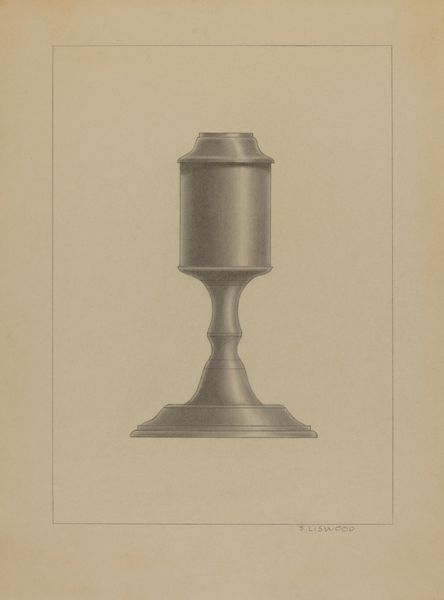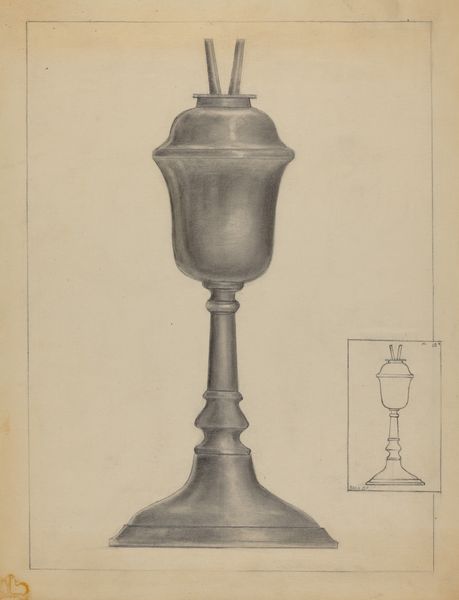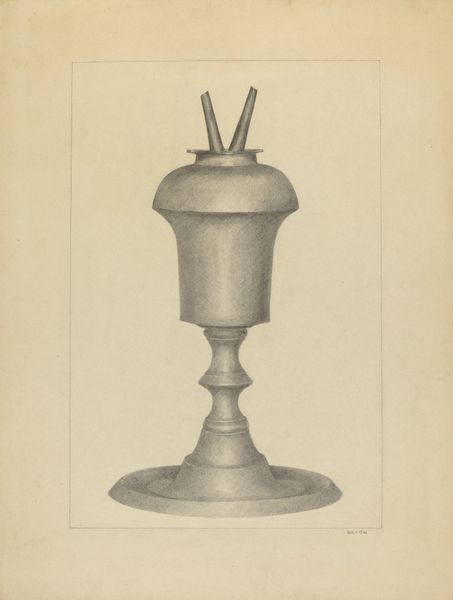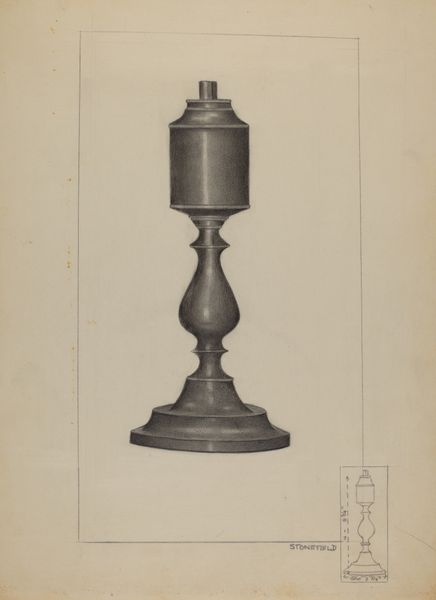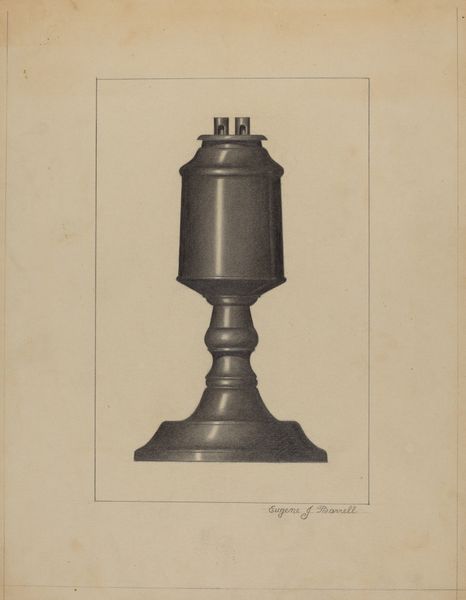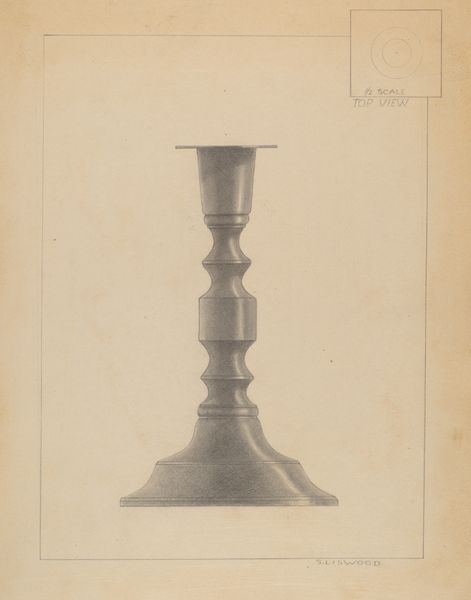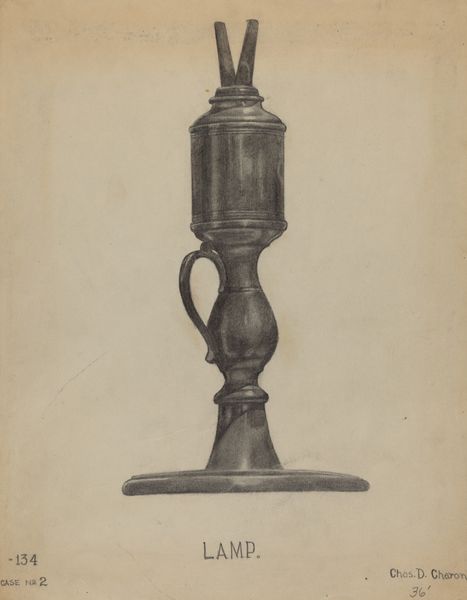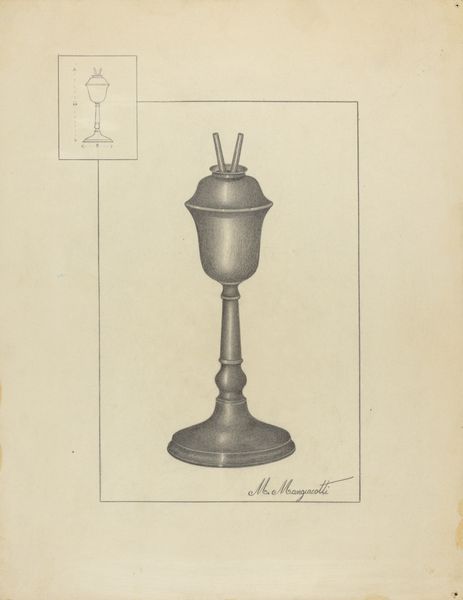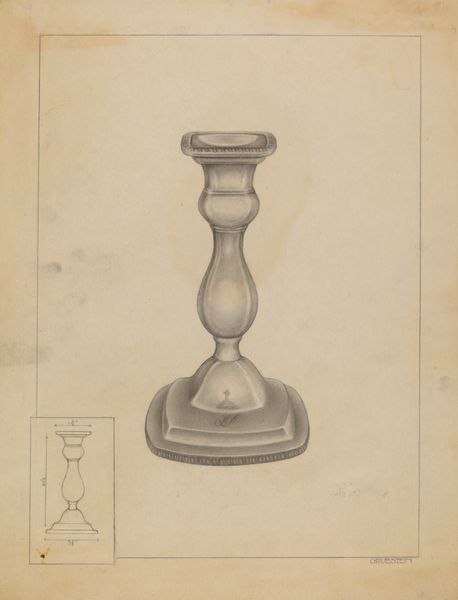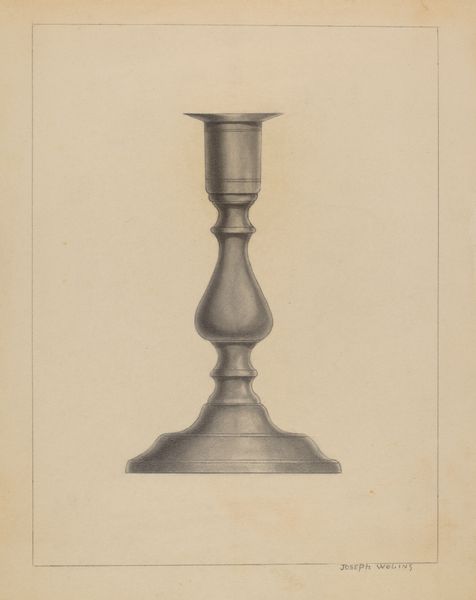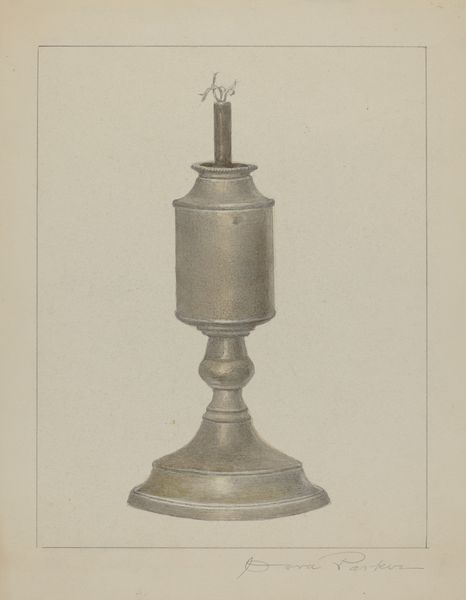
drawing, pencil, graphite
#
drawing
#
pencil
#
graphite
#
modernism
#
realism
Dimensions: overall: 29.2 x 22.8 cm (11 1/2 x 9 in.) Original IAD Object: 9 1/4" high; 4" wide
Copyright: National Gallery of Art: CC0 1.0
Curator: This is Filippo Porreca’s "Lamp," a pencil and graphite drawing dating to around 1939. What's your first impression? Editor: Stark. The composition and tonal range produce a haunting simplicity, reminiscent of a de Chirico painting. How do we read such a domestic object rendered so severely? Curator: Considering Porreca's socio-political background during that period, it can be seen as more than a mere still life. Everyday objects gained significance during the depression as reminders of perseverance, hope, and accessibility. It grounds aspirations in simple realism. Editor: It seems more focused on its aesthetic form. Note how Porreca uses subtle gradations to capture the light and volume. He also uses sharp lines and controlled hatching to explore material form with a modernist sensibility. The cylindrical lamp-body looks monumental against the empty backdrop. Curator: Agreed. Yet it is precisely its industrial quality – its manufactured cylindrical shape and the choice of materials—that hints at broader themes. The ready availability and standardization of the mass-produced item democratized illumination at the time. Editor: Democratization aside, there's something powerful in its self-contained quality. I get lost in the pure geometric reduction of the form and how it uses light. The image feels very carefully calibrated. The lines, the shadow – each element contributing to a harmonious whole. Curator: Don't overlook Porreca's process. Graphite, though a seemingly modest material, offered working-class artists affordable means. Its accessibility subverted established artistic hierarchies in material culture. Editor: Perhaps, but as we delve into context, let’s acknowledge its enduring formal resonance. Its stark beauty and austere elegance still speak volumes. Curator: True. And the dialogue continues; it connects form and context enriching its interpretation. Editor: Precisely. It proves how much is to be found by the exchange of varied insights.
Comments
No comments
Be the first to comment and join the conversation on the ultimate creative platform.
